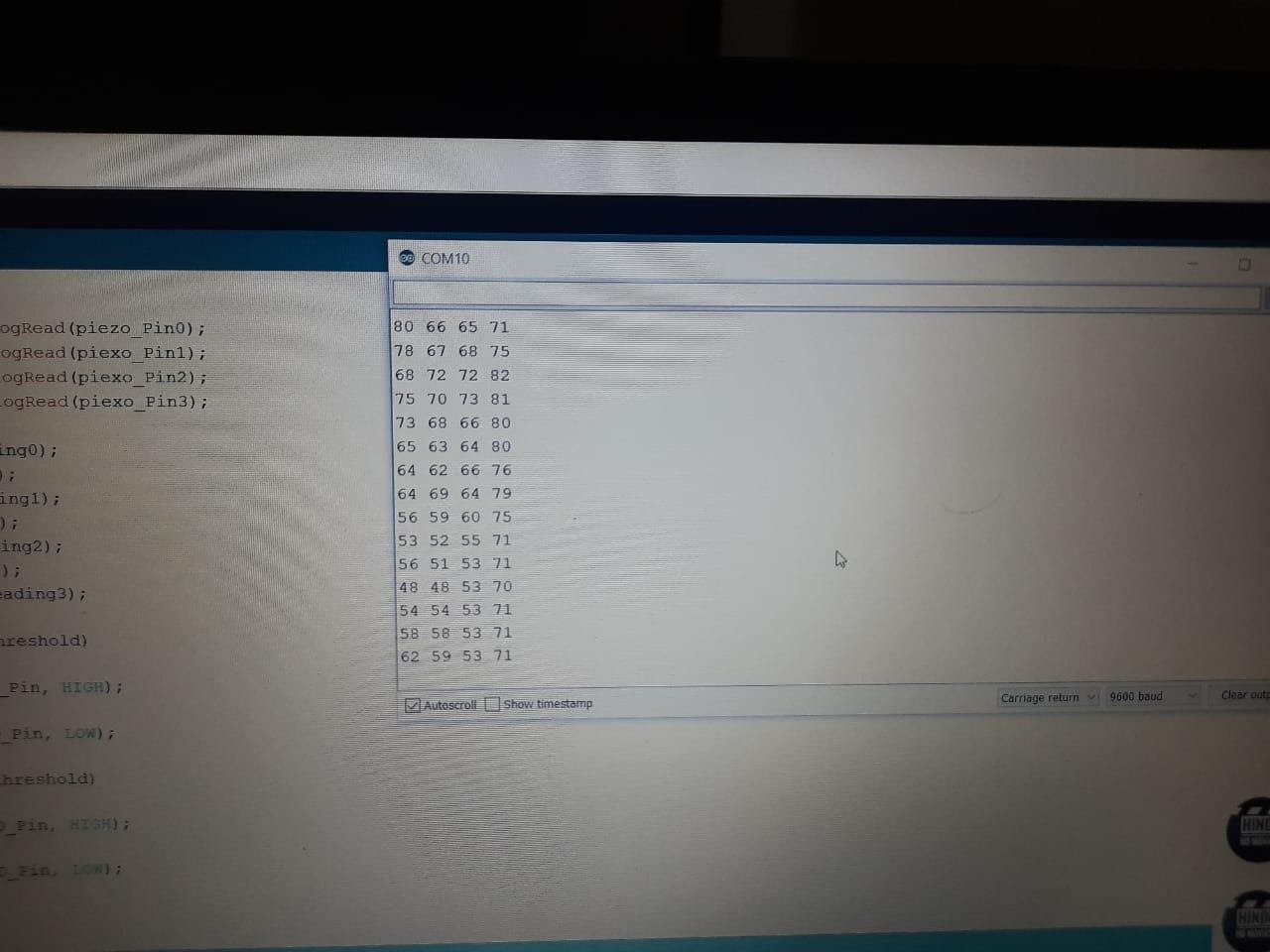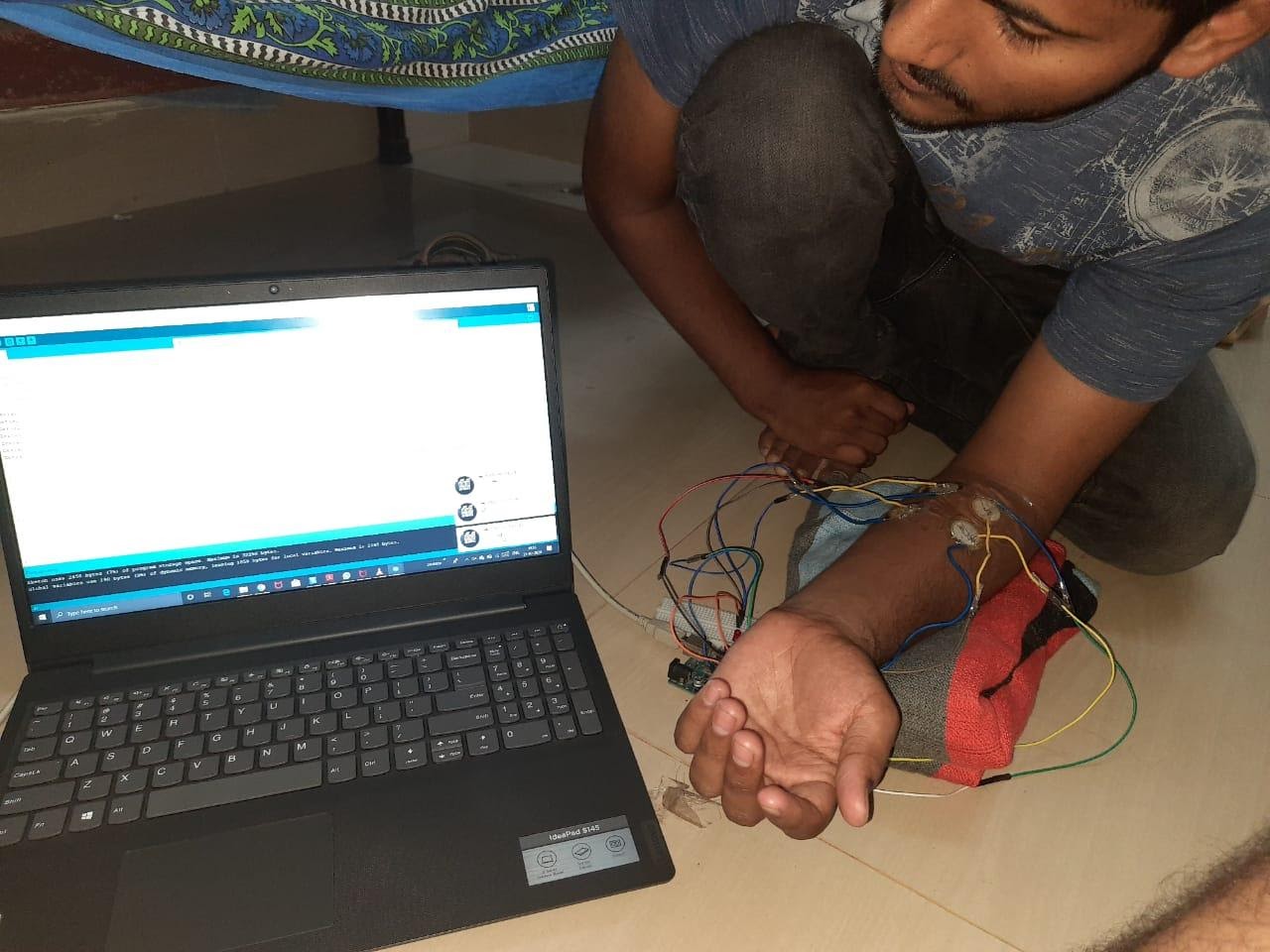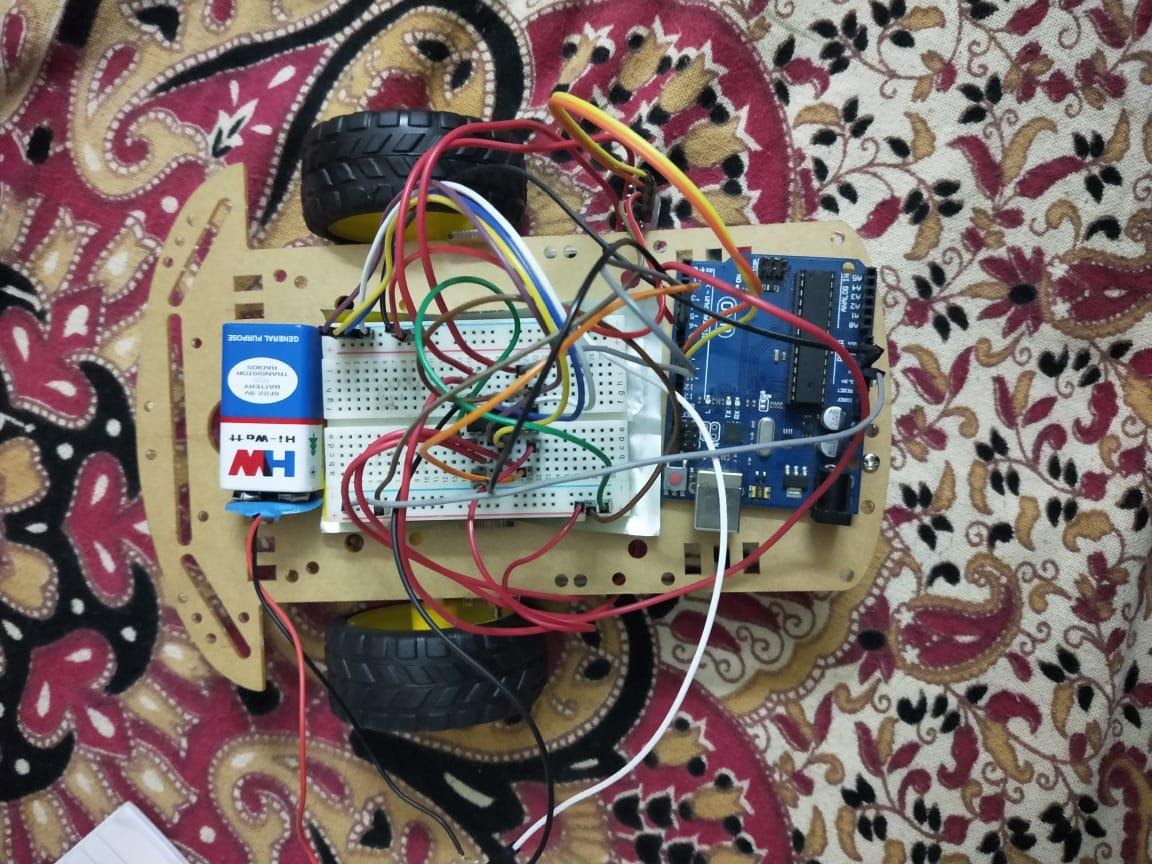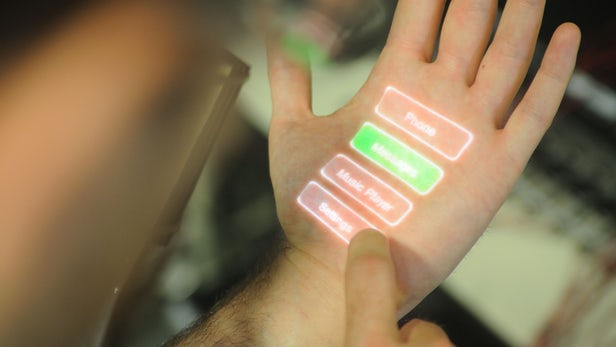Skinput Based Robot Car
PROBLEM STATEMENT:
Skin-put is an input technology that uses bio-acoustic sensing to localize finger taps on the skin. The mini-Sense sensor is placed on different parts of the human arm. The functioning of each tap is shown on the LCD which is also placed on the arm. Taps on the arm will allow the users to control a robotic car.
PROPOSED SOLUTION:
❖ An array of vibration sensors used to collect the data generated from finger taps on the skin and
sent over Bluetooth to control the robot car. The data received by the robot car receiver will be
analyzed and its direction of motion will be decided.
❖ The sensing of finger taps is done by fitting electrodes on a band to be worn on the hand sleeve.
A metallic ring is worn around the finger that is tapping. The signals detected by these electrodes
are fed into the computer and processed to give the exact coordinates of the finger taps and the
intention of it. Through a receiver controller, the motor car is given the direction to move.
METHODOLOGY
Components/Materials Used:
• Piezo Vibration/Tap sensor: for gathering sensor data.
• Arduino: primary microcontroller
• Robot Chassis: To build the bot.
• Bluetooth module: For wireless communication between humans and the bot.
• Motor driver, battery, wheels, DC-motor.
To read more about skinput and how we made the project click
here for a detailed explanation.
RESULTS

● Image: It shows the values from 4 different sensors

● Image: Calibrating the sensors

● Image: Final Wireless Robot Car
FUTURE WORK
Once the Robot is working based on the taps of the sensors. We’ll next keep a small Pico projector
on the arm and project the Robot Functionalities and the forearm. Which can be seen in the below
picture.

KEY LEARNINGS
We learnt how to build a Wireless Robot which includes the learning of writing code on Arduino IDE, connections with the Bluetooth module (HC-05) and integration of the robot motors with the motor drivers. Secondly, we learned how the vibration sensor works and learned how to calibrate the sensors. Thirdly we learned how to print any function/text on the LCD screen.
CONCLUSION
Hence, we started with building a basic wireless robot and worked of the vibration sensors and finally implemented the Skin put based Robot using the vibration sensor(piezo) and parallelly sending the data to the wireless bot to do its required functionality.
REFERENCES
● skin
put: Appropriating the Body as an Input Surface by Chris Harrison, Disney Tan, Dan Morris,
Atlanta, GA, USA.
● A YouTube video on skin
put: Appropriating the Body as an Input Surface. Chris Harrison, Disney Tan, Dan Morris
● skin
put: Appropriating the Skin as an Interactive Canvas Chris Harrison, Disney Tan, Dan
Morris.
● Amento, B., Hill, W., Terveen, L. The
sound of one hand: A wrist-mounted bio-acoustic fingertip gesture interface. In Proceedings of
the CHI ‘02 Extended Abstracts (2002), 724–725
TEAM
● Abhijit Kumar (Mentor)
● Govind Sunil Kumar (Mentor)
● Yogesh
● Ritesh Chaudhary